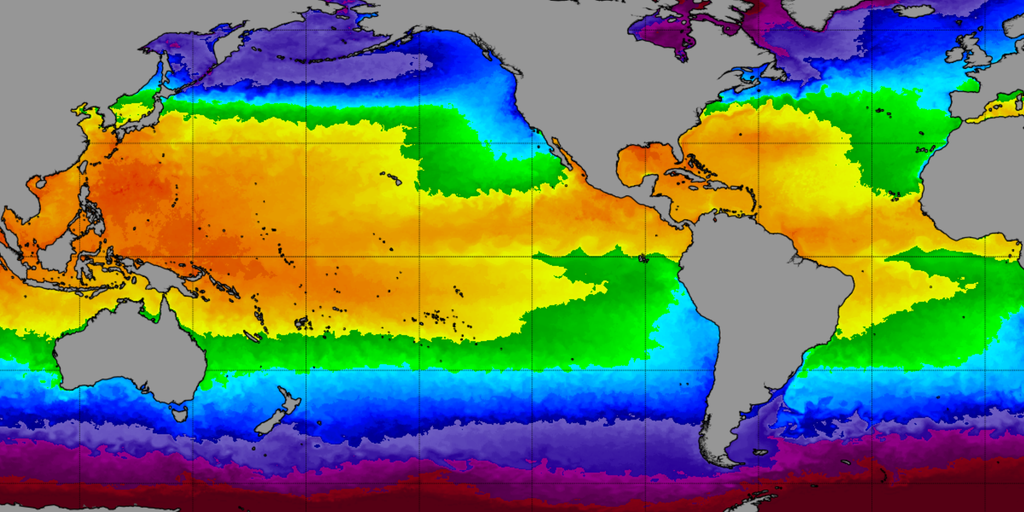Neutral Waters: The Current State of El Niño and La Niña
As the sun dipped below the Pacific horizon, a fishing boat bobbed gently in the waters off the coast of California. Onboard, seasoned fishermen exchanged tales of yearly catches, punctuated by the anxious reality that weather phenomena like El Niño and La Niña had reshaped their livelihoods for decades. Yet, amid their conversations swirled unpredictable patterns of climate change, the Pacific Ocean’s temperamental nature, and a now-dominant topic—a neutral period where neither weather pattern seems to take hold.
What Is ENSO and Why Does It Matter?
The El Niño-Southern Oscillation (ENSO) is a complex climate pattern that significantly influences global weather. It oscillates between three phases: El Niño, characterized by warming ocean waters, La Niña, defined by cooler conditions, and a neutral phase where neither holds sway. Understanding these phases is crucial not only for fisheries but also for agriculture, water resources, and disaster preparedness globally.
The National Oceanic and Atmospheric Administration (NOAA) recently reported a prevailing neutral state across large swathes of the Pacific, with water temperature anomalies hovering between -0.5 °C and 0.5 °C—metrics that suggest neither El Niño nor La Niña can claim the environmental spotlight. “Neutral conditions often lead to less predictable weather, which can be as concerning as extreme events,” cautioned Dr. Mia Tran, a climatologist at the University of California. “We need to prepare for regional impacts that are unique to these transitional phases.”
The Science Behind Neutral Conditions
Diving deeper into the science, we find that during neutral ENSO cycles, weather patterns tend to be governed more by local influences than by large-scale oceanic shifts. This year, the data suggests:
- The jet stream retains fewer kinks, leading to less severe weather disruptions.
- The southern U.S. experiences warmer-than-average temperatures, while the north braces for cooler conditions.
- Regions like the Ohio Valley become critical transitional zones, impacting local climate directly.
Dr. Samuel Roberts from the International Climate Institute warned that “despite the absence of extremes, the deviation from historical norms can still bring severe outcomes such as droughts or floods.”
The Historical Context and Implications
Historically, El Niño and La Niña pose different yet quantifiable risks. A strong El Niño can lead to increased rainfall and flooding, while La Niña is often associated with droughts in certain areas. Last winter was classified as a La Niña phase, though experts noted its weak influence, resulting in an unexpectedly warm season—1.9 °F above the long-term average. “Weak signals can often mimic neutral conditions, which baffles forecasters and disrupts seasonal expectations,” explained researcher Lisa Chen, who has spent the last decade studying these climate patterns.
Forecast Models and Future Trends
Despite a few predictions suggesting a potential La Niña phase could develop later in the year, NOAA’s multimodel forecasts generally lean toward a sustained neutral status through early 2025. The chances of slipping into La Niña are minimal, as most models categorize this season as ‘La Nada.’
With impending changes in trade winds typically expected this time of year, slight cooling of surface temperatures might occur. Yet, noted experts such as Chen are cautious about the prevailing warmth present in subsurface waters; its lingering effects complicate predictions. “The ocean’s depth really matters in how quickly we see a response in surface temperatures,” she added.
Community Impacts and Adaptations
Back on the fishing boat off California, concerns about shifting tides mirror those of farmers, city planners, and emergency responders up and down the West Coast. Local agricultural agencies are adjusting crop schedules, while disaster management teams are reassessing water resource allocations to prepare for potential droughts—or unexpected floods from late-season rain.
A recent study from the Global Climate Action Network emphasized the necessity for adaptive strategies centered around clearer predictive analytics in managing water dependency and crop rotations. “We’re facing more risk with less certainty,” explained lead author Jorge Ramirez. “Policy adaptation is key.”
Recommendations for Stakeholders
In light of these uncharted waters, here are recommendations for stakeholders navigating the implications of a neutral ENSO phase:
- Invest in research to better understand local climate patterns.
- Enhance predictive models that incorporate climate variability to inform agricultural practices.
- Build resilience strategies for water management tailored to non-extreme but unpredictable conditions.
As twilight cast its glow over a now-still sea, it served as a reminder of the unpredictable rhythms of nature. While the Pacific may seem tranquil on the surface, its depths conceal complexities that challenge tradition and push for adaptability. The fishermen on their boat reflected on how their lives inherently intertwined with these climatic cycles, ever aware that even a neutral phase can alter the future’s wave.









